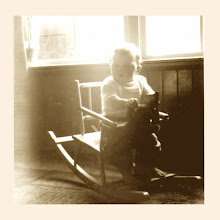Although he was born at the other side of the Congo river,
Franklin Boukaka's first serious move into a musical career was made in Leopoldville. In Brazzaville he had helped to form the Negro Band, and when the band started recording at the Esengo label he came into contact with the Rock-a-Mambo/African Jazz
clan and
Joseph Kabasele (a.k.a. le Grand Kallé), who was at the time the Big Star of Congolese music. He joined
Rochereau and
Jean Bombenga in
Jazz Africain in 1960, when Kallé was at the Table Ronde.

Gary Stewart states that Boukaka joined Bombenga and Casino Mutshipule in forming the first version of Vox Africa in 1960, but personally I think Jazz Africain was not abandoned so quickly, - although Rochereau left when Kallé returned.
Around 1963 or 1964 Franklin returned to Brazzaville to join
Cercul Jazz, the band of the
cercle culturel* in the Bacongo quartier of Brazza. It was with this orchestra that he moved away from songs about
love and nature (as Ntesa Dalienst once described it), and started singing about social matters, and even politics (which finally cost him his life - but that's the subject of a later post).
And that brings us to this great lp from the
Merveilles du Passé series on the African label, released in 1986 and claiming to contain tracks from 1967.
This is likely to be true for the tracks with the Cercul Jazz. The most famous of these two tracks is "Pont Sur Le Congo", in which Boukaka calls on the two Congos to unite (a translation of part of this song can be found in Gary Stewart's "
Rumba on the River"). I don't want to go into the lyrics of this song.
What strikes me with this song is the vocals, with a strong influence of African Jazz - and more precisely Jean Bombenga - in the duets.
My favourite tracks on this lp are, however, the two tracks of Franklin Boukaka with the
Negro Band. In every aspect in the style of Franco's OK Jazz, including the great guitar picking, which must be by (the strangely unknown)
Willy Stany. Both songs are composed by the other singer on "Journal Dipanda",
Démon Kasanaut.

The B-side of this lp contains four nice (but not as nice as the A-side) tracks by Franklin Boukaka and
Negro Succes, composed by
Bholen and
Bavon Marie Marie.
If all these tracks were recorded in 1967, Franklin Boukaka must have had a busy year. Because in the same year he founded his ensemble which he named "Franklin Boukaka, ses sanzas et son orchestre Congolais".
I'll be posting more of Franklin Boukaka in the very near future, starting with more of Franklin and the Cercul Jazz.
African 360.153*a centre set up by the French after World War II to educate the population (i.e. mainly in the French ways...)
 Here is an lp filled with tracks that are bound to bring smiles of recognition on the faces of those who have a reasonable amount of knowledge of the music of Guinea. It contains versions of great tracks like "Apollo" (which Sekou Bambino Diabaté turned into a hit), "Diamaraboy" (which was called "Djama ba labo", when performed by the Horoya Band) and "Moi ça m'en fou", which you will recognise as a track covered by Balla et Ses Balladins, but which according to Graeme Counsel is likely to be a track originally from Côte D'Ivoire.
Here is an lp filled with tracks that are bound to bring smiles of recognition on the faces of those who have a reasonable amount of knowledge of the music of Guinea. It contains versions of great tracks like "Apollo" (which Sekou Bambino Diabaté turned into a hit), "Diamaraboy" (which was called "Djama ba labo", when performed by the Horoya Band) and "Moi ça m'en fou", which you will recognise as a track covered by Balla et Ses Balladins, but which according to Graeme Counsel is likely to be a track originally from Côte D'Ivoire. The artist of this wonderful lp is Kouyaté Sory, who featured on the second volume of "Assalam Aleikoum Africa", - and is not to be confused with Kouyaté Sory Kandia. Listening to the music this is not very likely: this Sory is no belcanto vocalist, but rather a one-man-band on the electric guitar.
The artist of this wonderful lp is Kouyaté Sory, who featured on the second volume of "Assalam Aleikoum Africa", - and is not to be confused with Kouyaté Sory Kandia. Listening to the music this is not very likely: this Sory is no belcanto vocalist, but rather a one-man-band on the electric guitar.










































